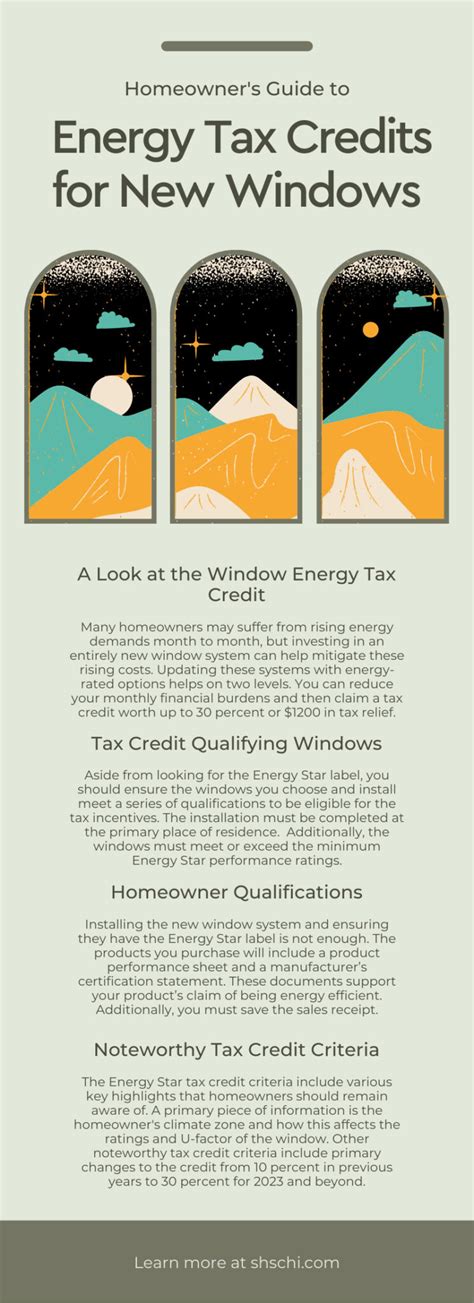Save Big: Unlock Your Tax Rebate by Upgrading to Energy-Efficient Windows
In today’s world, becoming more energy-efficient is not just a trend but a necessity. Homeowners are continually looking for ways to reduce their energy bills and minimize their environmental footprint. One of the most effective ways to achieve this is by upgrading to energy-efficient windows. Not only do they contribute to a more comfortable living environment, but they also come with financial benefits like tax rebates. In this article, we’ll explore how upgrading to energy-efficient windows can help you save money and unlock potential tax rebates.
The Importance of Energy-Efficient Windows
Windows are often the weakest link in a home’s energy efficiency. Poorly insulated windows can lead to significant energy loss, resulting in higher heating and cooling costs. Energy-efficient windows are designed to minimize this energy loss by using advanced materials and technologies. They feature double or triple glazing, low-emissivity (low-E) coatings, and gas fills that work together to reduce heat transfer.
How Energy-Efficient Windows Can Reduce Your Energy Bills
By replacing old, drafty windows with energy-efficient ones, homeowners can see substantial reductions in their energy bills. According to the U.S. Department of Energy, energy-efficient windows can reduce energy bills by 7-15%. This is a significant amount of savings, especially over time. Additionally, homeowners report enjoying a more consistent indoor temperature, improved comfort, and reduced noise levels.
Unlocking Your Tax Rebate: The Federal Tax Credit
One of the key incentives for homeowners to invest in energy-efficient windows is the federal tax credit. The Inflation Reduction Act has created opportunities for tax savings. In particular, homeowners can claim a tax credit for the installation of energy-efficient windows. As of the current tax regulations, you can receive a tax credit of up to 30% of the cost of the windows (materials only), with a maximum credit of $600.
What Qualifies for the Tax Rebate?
For windows to qualify, they must meet specific performance criteria as set by the Energy Star program. Typically, the windows must have a U-factor of 0.30 or lower and a Solar Heat Gain Coefficient (SHGC) of 0.25 or lower. When shopping for new windows, always look for the Energy Star label to ensure you are purchasing products that qualify for the tax rebate.
The Process of Upgrading to Energy-Efficient Windows
Upgrading your windows involves several steps:
- Research: Understand the types of energy-efficient windows available and which options meet Energy Star guidelines.
- Budget: Determine your budget for the window replacement. Keep in mind that while initial costs may be higher, the long-term savings are worth the investment.
- Consult Professionals: Consult with window installation experts who can help you choose the right product and ensure the proper installation.
- Installation: Schedule a time for the installation process. Ensure that the work is performed by certified professionals to guarantee eligibility for the tax credit.
- Documentation: Keep all invoices and receipts for tax purposes, including any manufacturer’s certification statements that verify the products meet energy efficiency standards.
Conclusion
Upgrading to energy-efficient windows is not just a choice for better insulation but a smart investment that brings long-term savings, enhanced comfort, and environmental benefits. The federal tax credit adds another layer of incentive, making this upgrade even more appealing. By choosing energy-efficient windows, you can significantly reduce your energy bills while also enjoying the satisfaction of knowing that you are contributing to a greener planet. So why wait? Take advantage of available tax rebates and improve your home’s efficiency today!
FAQs
- 1. How do I know if my windows are energy-efficient?
- Check for the Energy Star label, U-factor, and Solar Heat Gain Coefficient ratings. Energy-efficient windows typically have lower U-factors and better performance metrics.
- 2. What is the typical cost of upgrading to energy-efficient windows?
- The cost can vary significantly based on window type, size, and material. On average, homeowners can expect to spend between $300 to $1,000 per window, including installation costs.
- 3. Are there state or local tax rebates available?
- Many states and local utilities offer tax credits and rebates for energy-efficient upgrades. Check your local government’s website or consult with a tax professional for specific information.
- 4. Can I install energy-efficient windows myself?
- While some skilled DIYers can install windows, professional installation is often recommended to ensure proper sealing and insulation, which maximizes energy efficiency and allows you to qualify for tax rebates.
- 5. How long does it take to see savings after upgrading windows?
- Most homeowners begin to notice a decrease in energy bills within the first few months after installation, with more significant savings accumulatively within the first year.
Download Tax Rebate For New Windows
